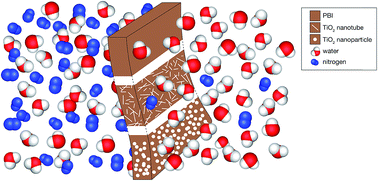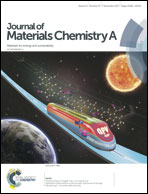Polybenzimidazole-based mixed membranes with exceptionally high water vapor permeability and selectivity†
Abstract
Polybenzimidazole (PBI), a thermally and chemically stable polymer, is commonly used to fabricate membranes for applications like hydrogen recovery at temperatures of more than 300 °C, fuel cells working in a highly acidic environment, and nanofiltration in aggressive solvents. This report shows for the first time the use of PBI dense membranes for water vapor/gas separation applications. They showed an excellent selectivity and high water vapor permeability. The incorporation of inorganic hydrophilic titanium-based nano-fillers into the PBI matrix further increased the water vapor permeability and water vapor/N2 selectivity. The most selective mixed matrix membrane with 0.5 wt% loading of TiO2 nanotubes yielded a water vapor permeability of 6.8 × 104 barrer and a H2O/N2 selectivity of 3.9 × 106. The most permeable membrane with 1 wt% loading of carboxylated TiO2 nanoparticles had a water vapor permeability of 7.1 × 104 barrer and a H2O/N2 selectivity of 3.1 × 106. The performance of these membranes in terms of water vapor transport and selectivity is among the highest reported ones. The remarkable ability of PBI to efficiently permeate water versus other gases opens the possibility to fabricate membranes for the dehumidification of streams in harsh environments. This includes the removal of water from high temperature reaction mixtures to shift the equilibrium towards products.



 Please wait while we load your content...
Please wait while we load your content...